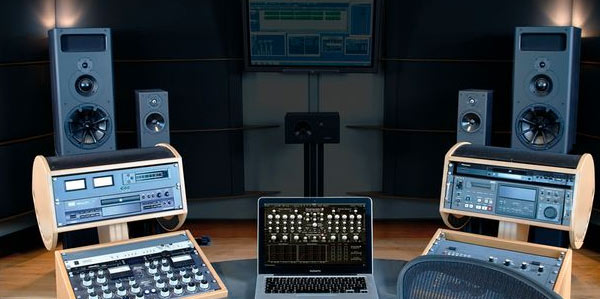EQ’d Master Part II
If you’re just getting tuned in to this topic, you might want to check out yesterday’s post first. We’re taking a closer look at the various “masters” that are created from the flat master mixes that are delivered and approved by the artist, producer and engineers.
I guess the basic question is which “master” do you want when you repurchase a “so-called” high-definition or high-resolution audio file from a digital download website? If you’re experience with a particular album has been strictly from a vinyl LP version, then you might be pleased with the typical HD downloaded file. Why? Because the EQ’d master that was created in the process of cutting the lacquer master for vinyl duplication is often used as the source for the transfer to the HD master soundfile. This is a huge problem!
As a former disc mastering engineer, I can tell you that the preparation of a vinyl LP is very different than the preparation of a CD or even a cassette release. The flat master mixes are always used as the source. But the steps that follow are dependent on the delivery format. And they all sound dramatically different.
For example, back in the days of cassette duplication, the mastering involved creating a version of the flat master that could be used in a bin loop duplication machine. An entire side of an album was made on 1/4″ 2-track analog tape and then formed into a loop (that’s the “loop” part of the process!). This was placed in a “bin” as well as fed over the playback head and capstan and puck roller (this keeps the speed regulated). The cassette master tape was played faster than the normal playback speed (usually 2x or even 4x) to a bank of duplication cassette machines that recorded on the tracks of an 1/8″ wide piece of tape (running faster as well). They would just duplicate a lot of passes before cutting the tape and loading it into the cassette shells (called C-0s because they came without any tape inside them).
For the vinyl LPs, the mastering engineer had to adhere to the practices of preparing for vinyl turntable playback. There is lot of considerations that a disc cutting mastering engineer has to think about based on the very sever limitations of the vinyl LP format. Some are technical and some are creative. I mentioned yesterday that the low frequencies are routinely folded to mono below a specified corner frequency (usually 50-100 Hz). The result is a narrowing of the stereo image to ensure that the walls of the grooves are correctly formed. But there is a sacrifice that must be made to EQ’d masters that ultimately get delivered to the vinyl LP copies. And that’s not all.
On the “creative” side of the job, the mastering engineer alters the dynamics and the frequency contour to his/her own taste and in keeping with the “best” practices of the industry. The record company pushes for louder and brighter (just like the video displays in a Best Buy store that has the brightness and contrast turned up way beyond calibration to make the TVs attractive!) and usually the mastering engineer complies (if they want more work from the company). This creates a less than ideal version of the flat master that the band approved and liked.
I’ve heard from a few friends that are currently working as mastering engineers and they confirm that the fidelity of the “remastered” discs is not their primary concern. Things need to punch and sizzle and that means that the EQ’s master used as the source for the new HD download files is NOT the best source. No wonder I hear from so many customers that are unhappy with their recent downloads of a classic album or track in so-called “HD”.
I have said previously that these are not “HD” according to my definition…many have come from standard definition sources. But it seems that many if not most of the transfers are using the EQ’d master rather than the flat master or a newly re-mastered version, which is the worst version to make available to customers.
Tomorrow I’ll talk about the right way to do this…something I’m personally trying to implement as iTrax.com tries to expand.

